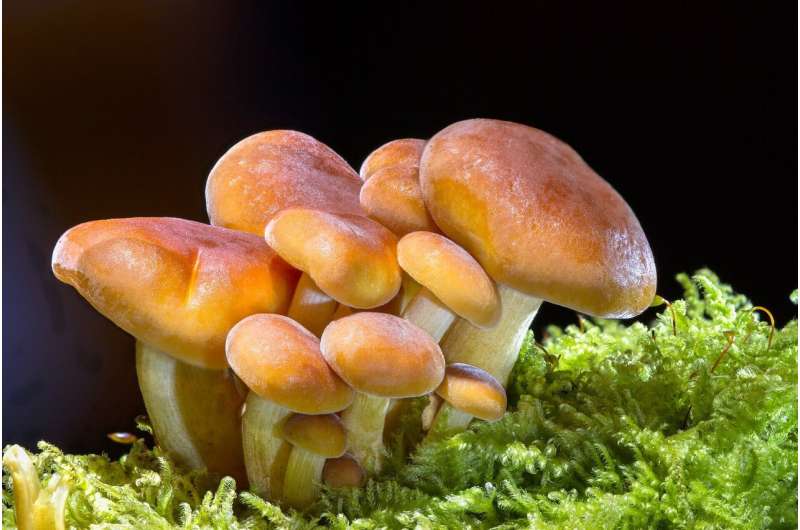Credit: CC0 Public Domain
Arsenic (As) is a natural environmental contaminant to which humans are usually exposed in water, air, soil, and food. China is a typical high-As region, and also a great contributor of the world production of cultivated edible mushrooms and a region abundant in wild growing edible mushrooms. Mushrooms can accumulate different amounts of As and different As compounds.
Many studies on As in mushrooms from China have been published in Chinese partly because of the language barriers. They are not fully accessible for those who do not read Chinese.
In a study published in Chemosphere, researchers from Xishuangbanna Tropical Botanical Garden (XTBG) summarized the existing data on contents of As and As compounds in mushrooms from China and provided an update review of the findings on As in mushrooms associated with environments and health risks.
The researchers performed a systematic literature search in ISI Web of Science and Google Scholar using combinations of key words including arsenic, fungi, mushroom, fruiting body, sporocarp, metalloid, China. Similar searching strategy was also carried out in CNKI in Chinese. They also checked cited references in the identified literature to find more relevant studies.
They found that in China As in cultivated mushrooms is lower than in wild grown mushrooms in general. Health risk assessments of As in mushrooms have been carried out in numerous studies. Mushrooms possessing elevated As contents belong to several fungal families. For some mushroom species, both the intraspecific and interspecific variation in As forms can be large.
"We propose future studies to be done on developing simpler methods for As compound determination, identifying As species in mushroom species not investigated so far, and so on," said Prof. CAI Chuantao, principal investigator of the study.
More information: Ji Zhang et al. Arsenic and arsenic speciation in mushrooms from China: A review, Chemosphere (2019). DOI: 10.1016/j.chemosphere.2019.125685
Journal information: Chemosphere
Provided by Chinese Academy of Sciences
























